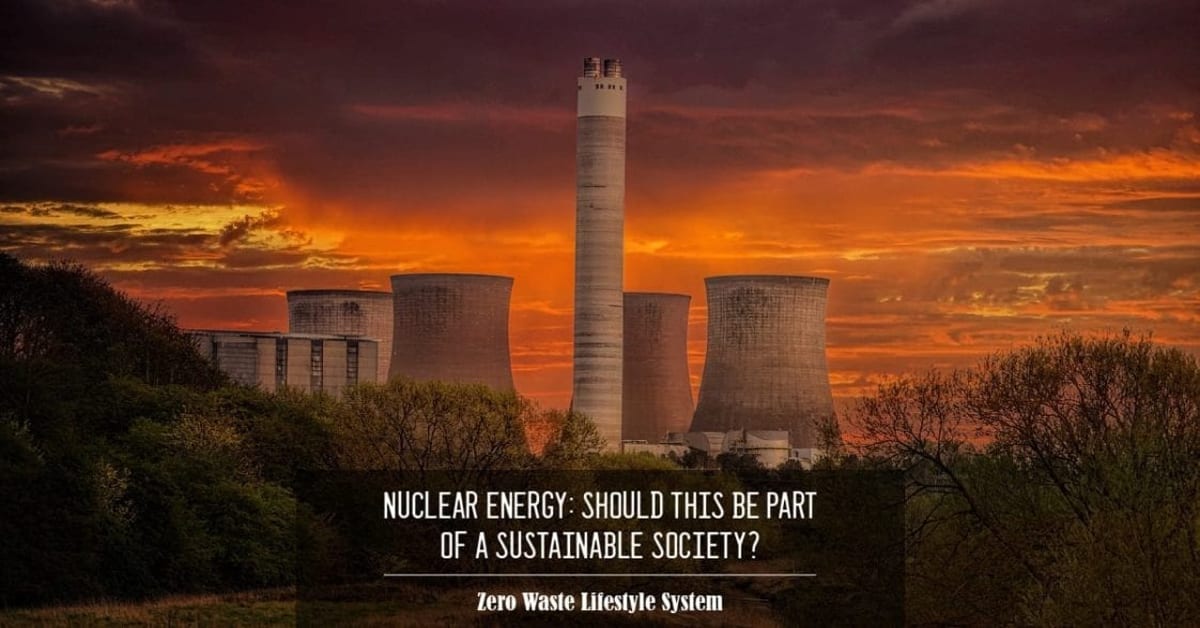Not every day, we hear nuclear energy as a hero. When in mind, most people picture huge explosions and deadly consequences. Interestingly though, there’s another side to the picture. It is now seen as a potential solution to the unending demand of humanity for power. Well, is it?
Nuclear Energy Among Renewable Energy Sources

For years, supporters of nuclear energy has been raising nuclear power source as a renewable energy. This means that alongside sunlight, wind, rain, sea movement, and geothermal heat—sources that are continuously replenished—nuclear energy is aligned. How did they arrived to this conclusion?
Apparently, this group points out to the goal of renewable energy. The aim of renewable energy infrastructures is to lessen the carbon footprint. And surprisingly, nuclear energy is way better than fossil fuels when it comes to carbon emission. This makes it seemed fitting to be enlisted as a renewable energy source.
However, this is not a popular notion to others. This sparks debates. As to why, they redirected the arguments to the very definition of two terms: sustainable energy and renewable energy.
Sustainable vs Renewable Energy
Sustainable energy and renewable energy may be two coinciding terms. However, they also have their differences.
For instance, sustainable energy is concerned about three things. First, it should meet present and future energy consumption needs. It should be accessed today, and should continuously be a source of energy in the future. Second, it should naturally be replenishable, even without the help of human activities. Lastly, the energy consumed should not be greater than the energy produced.
The main focus of sustainable energy is on how long an energy source can provide for human consumption. Therefore, the energy source should be something that can be maintained and will last at a long period of time to be sustainable.
Renewable energy also manifests the same three characteristics as sustainable energy. However, while sustainable energy is concerned on the wide-scale use of energy sources, renewable energy on the other hand is focused on clean use of energy. From the term itself, the energy source should be something humans can “make new again,” or naturally replenished even when used.
Therefore, it is safe to say that all renewable energy as sustainable, but not all sustainable energy is renewable.
Development of Nuclear Energy
The enormous energy produced from a nuclear power source lies in a tiny particle invisible to the human eye. It’s atom.
Atom, as we’ve known in our grade school days, is the smallest unit of matter. Each atom has an electron, a proton, and a neutron—also called as its subatomic particles. At the center lies the nucleus of an atom which is surrounded by electron and proton.
Now, to transform this into useful energy, scientists use the certain elements, usually uranium, and split its nucleus into a process called nuclear fission. This process produces a lot of heat which can boil water. The boiling water then, produces steam which is used to run turbines. Thus, nuclear energy is produced.
This technology continuously grows ever since Enrico Fermi—a scientist who led a group initiating the first self-sustaining nuclear chain reactor—introduced the commercial use of electricity-generating nuclear power plants in 1950s.
Today, nuclear power plants stretch to Japan, Canada, South Korea, Ukraine, United States, France, and China.
What makes nuclear energy better than fossil fuels?
The terror brought by the aftermath of industrial revolution, a period where almost everything is connected to the burning fossil fuels, have introduced us to nuclear energy. Why is it so much better? Let’s focus on two areas.
Harnessing nuclear energy is more efficient.
Let’s take for instance coal. Coal is a common example of fossil fuel and famous for being a source of heat. For every 1 kilogram of coal burnt, a total of 8 kWh (kilowatt heat) can be generated. Whereas for every 1 kilogram of Uranium-235, around 24,000,000 kWh is already produced. Approximately, it is 8,000 more times efficient than coal.
Nuclear energy does not emit greenhouse gases.
Fossil fuels are known for its greenhouse gas emission. It exposes people to toxic gases from gas wells and active oils. When burned, it releases hazardous gases as well. On the other hand, nuclear energy produces very minimal amount of greenhouse gases, thus, makes it cleaner than fossil energy.
Is “more energy”and “less gas emission” better in this sense? Should we welcome nuclear energy still?
Dangers of Nuclear Energy
While nuclear energy has many advantages, it also has a lot of cons. Ever since World War II, the term nuclear energy has not been appealing. Even in the context of power generation, we have reasons to be cautious.
Granted, nuclear energy is helpful if things work properly. However, that is not always the case. Accidents in nuclear power plants have cost millions to compensate for the losses, not only of facilities but also of properties around the plants. Worst, it has taken lives and created a seemed infinite impact.
For instance, the nuclear accident in Three Mile Island, Pennsylvania in 1979 released radiation into the atmosphere due to a partial meltdown. This caused them a total of $900 million dollars to compensate the cleanup.
In Soviet Union, a reactor design in Chernobyl Power Plant malfunctioned causing hundreds of lives in 1986. Lastly, the famous Fukishima reactor in Japan which was hit by an earthquake and tsunami brought a huge environmental disaster.
Clearly, threats from nuclear energy utilization are costly. They cost lives.
Environmental Impacts of Nuclear Energy
With or without nuclear accidents, nuclear energy posts harm to the environment.
First, uranium, the most commonly used element in nuclear energy, is finite. Even when nuclear energy produces a large amount of power from every gram of Uranium, there will come a time that this element will ran out. In the long run, it will be out of stock.
Second, raw materials like uranium is naturally unstable. Handling it requires precautionary measures and proper practices. This goes not only for mining but also to transporting and storing. Flaws in this processes can cause huge explosions that deteriorates lands.
Third, it produces nuclear wastes. A lot of people still cannot handle normal wastes such as plastics, and nuclear wastes are not even close to that when it comes in disposing. During nuclear fission, radioactive materials are produced as a by-product. Failure to dispose properly can lead to contamination and death. Not only of human life, but of other organisms as well. In addition, nuclear plants lack storage. And even when they have, these lands cannot serve other use in the future due to contamination.
Lastly, it pollutes the water. While we are happy that it produces minimal amount of harmful gases, it sure is bothersome to water. Since nuclear fission causes heat, water is used to cool it down. This turns into steams, and goes back to liquid after some time. This may be contaminated with radioactive materials and can go into streams. In addition, the hot water gives off too much heat which kill plants nearby.
Should Nuclear Energy Be Part of A Sustainable Society?
All things said, nuclear energy should not be a part of sustainable society. While it holds promises of clean energy, majority of its effects are damaging to people and the environment. After all, there are still far better alternatives which we hope, people can consider instead. They come from nature itself.





One Comment
Leave a ReplyOne Ping
Pingback:Saving Money Through Zero Waste: Sustainable Energy Use - 9 Actionable Tips! - Zero Waste Lifestyle System